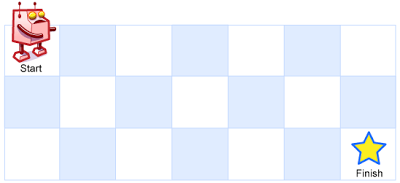Unique Paths
There is a robot on an m x n grid. The robot is initially located at the top-left corner (i.e., grid[0][0]). The robot tries to move to the bottom-right corner (i.e., grid[m - 1][n - 1]). The robot can only move either down or right at any point in time.
Given the two integers m and n, return the number of possible unique paths that the robot can take to reach the bottom-right corner.
The test cases are generated so that the answer will be less than or equal to 2 * 109.

Input: m = 3, n = 7
Output: 28
Example 2:
Input: m = 3, n = 2
Output: 3
Explanation: From the top-left corner, there are a total of 3 ways to reach the bottom-right corner:
1. Right -> Down -> Down
2. Down -> Down -> Right
3. Down -> Right -> Down
class Solution {
public int solve(int i,int j,int m,int n, int [][] dp)
{
if(i==m-1 && j==n-1)
{
return 1;
}
// Out of bounds
if (i >= m || j >= n) {
return 0;
}
if(dp[i][j] !=-1)
{
return dp[i][j];
}
int right=solve(i,j+1,m,n,dp);
int down=solve(i+1,j,m,n,dp);
return dp[i][j]=right+down;
}
public int uniquePaths(int m, int n) {
int [][] dp= new int[m][n];
// Initialize all cells to -1 (uncomputed)
for (int row = 0; row < m; row++) {
for (int col = 0; col < n; col++) {
dp[row][col] = -1;
}
}
return solve(0,0,m,n,dp);
}
}
Comments
Post a Comment